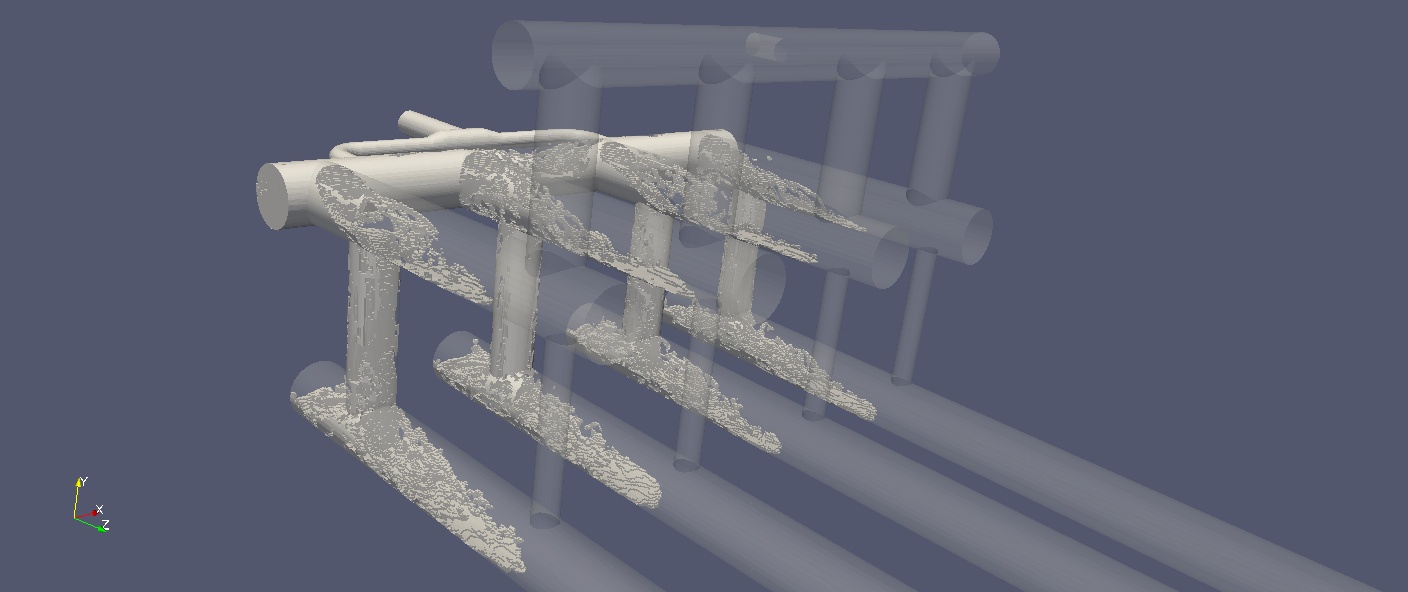Finger-type Slug Catcher CFD Analysis
CFD calculations have been used to determine the best header layout for a finger type slug catcher, so as to evenly distribute the flows over the different fingers. Downstream of the header the two-phase flow in the finger pipe of a finger-type slug catcher can be analyzed using CFD techniques. When the fluid flow in the inlet header manifold is evenly distributed among the different fingers, it is necessary to obtain stratified flow to promote liquid separation. The two-phase flow in the separation section is simulated to study the amount of liquid at the intersection with and through the gas riser, which is critical in flow assurance. Problems typically occur when velocities become too high and the flow is too turbulent. This could result in gas carrying liquid from the storage section back through the gas riser.



Pipeline Water Crossings Vortex Induced Vibrations (VIV)
Pipelines cross streams and rivers in thousands of locations. Often, these pipeline crossings are submerged during flood events. Repeated flooding can also increase the unsupported length of the pipeline from bank scour and erosion. As water flows past the pipeline, vortex induced vibrations can occur. The VIV can result in failure of the pipeline.
To prevent VIV failures, CRM Engineering Services has built a tool that based on the pipeline profile, geometry, normal operating pressure, and the soil type of the bank, calculates the in-line and cross-flow natural frequencies. With the natural frequencies calculated, the safety factor against VIV failure for both ULS and FLS can be determined.
